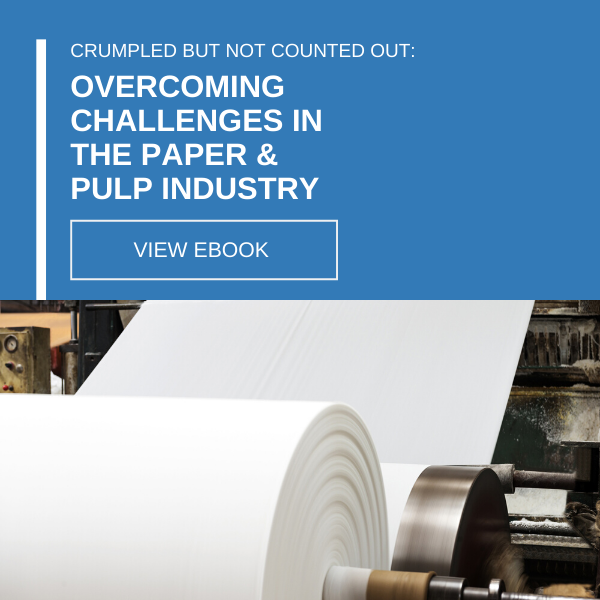-
Subscribe to Blog:
SEARCH THE BLOG
CATEGORIES
- Aerospace
- Asset Maintenance
- Automotive
- Blog
- Building Products
- Case Studies
- Chemical Processing
- Consulting
- Food & Beverage
- Forestry Products
- Hospitals & Healthcare
- Knowledge Transfer
- Lean Manufacturing
- Life Sciences
- Logistics
- Manufacturing
- Material Utilization
- Metals
- Mining
- News
- Office Politics
- Oil & Gas
- Plastics
- Private Equity
- Process Improvement
- Project Management
- Spend Management
- Supply Chain
- Uncategorized
- Utilities
- Whitepapers
BLOG ARCHIVES
- October 2024 (4)
- September 2024 (5)
- August 2024 (5)
- July 2024 (6)
- June 2024 (3)
- May 2024 (3)
- April 2024 (4)
- March 2024 (3)
- February 2024 (4)
- January 2024 (5)
- December 2023 (2)
- November 2023 (1)
- October 2023 (6)
- September 2023 (3)
- August 2023 (4)
- July 2023 (2)
- June 2023 (3)
- May 2023 (7)
- April 2023 (3)
- March 2023 (3)
- February 2023 (5)
- January 2023 (6)
- December 2022 (2)
- November 2022 (5)
- October 2022 (5)
- September 2022 (5)
- August 2022 (6)
- July 2022 (3)
- June 2022 (4)
- May 2022 (5)
- April 2022 (3)
- March 2022 (5)
- February 2022 (4)
- January 2022 (7)
- December 2021 (3)
- November 2021 (5)
- October 2021 (3)
- September 2021 (2)
- August 2021 (6)
- July 2021 (2)
- June 2021 (10)
- May 2021 (4)
- April 2021 (5)
- March 2021 (5)
- February 2021 (3)
- January 2021 (4)
- December 2020 (3)
- November 2020 (3)
- October 2020 (3)
- September 2020 (3)
- August 2020 (4)
- July 2020 (3)
- June 2020 (5)
- May 2020 (3)
- April 2020 (3)
- March 2020 (4)
- February 2020 (4)
- January 2020 (4)
- December 2019 (3)
- November 2019 (2)
- October 2019 (4)
- September 2019 (2)
- August 2019 (4)
- July 2019 (3)
- June 2019 (4)
- May 2019 (2)
- April 2019 (4)
- March 2019 (4)
- February 2019 (5)
- January 2019 (5)
- December 2018 (2)
- November 2018 (2)
- October 2018 (5)
- September 2018 (4)
- August 2018 (3)
- July 2018 (2)
- June 2018 (4)
- May 2018 (3)
- April 2018 (3)
- March 2018 (2)
- February 2018 (2)
- January 2018 (1)
- December 2017 (1)
- November 2017 (2)
- October 2017 (2)
- September 2017 (1)
- August 2017 (2)
- July 2017 (2)
- June 2017 (1)
- April 2017 (3)
- March 2017 (3)
- February 2017 (2)
- January 2017 (2)
- December 2016 (2)
- November 2016 (4)
- October 2016 (4)
- September 2016 (3)
- August 2016 (6)
- July 2016 (4)
- June 2016 (4)
- May 2016 (1)
- April 2016 (3)
- March 2016 (4)
- February 2016 (2)
- January 2016 (4)
- December 2015 (3)
- November 2015 (3)
- October 2015 (1)
- September 2015 (1)
- August 2015 (4)
- July 2015 (6)
- June 2015 (4)
- May 2015 (7)
- April 2015 (6)
- March 2015 (6)
- February 2015 (4)
- January 2015 (3)
CONNECT WITH US
Tag Archives: Asset Utilization
A proper Asset Performance Management (APM) plan ensures that your critical revenue-producing assets operate smoothly, efficiently, and at or near their rated capacity.
Asset Performance Management is the broad, systematic planning and control of a physical resource throughout its operating life. It includes the specification, design, construction, operation, maintenance, modification, and ultimately, disposal. Its principles apply to any industry with mission-critical assets, and is best implemented with support from the top-down and bottom-up. The entire organization should be involved, and supportive to ensure that it is executed properly.
Methodologies used in APM
- Asset Reliability – The process of ensuring that assets continue to do what they are needed to do, when they are needed to do it.
- Reliability-centered Maintenance (RCM) – Used to determine the activities necessary for the asset to operate properly by focusing on maintenance tasks that mitigate against the consequences of failure.
- Maintenance Management – Adherence to a benchmark of world-class maintenance standards and practices.
Key Performance Indicators (KPIs) and Enabling Technology
A vital step in implementing an APM plan is establishing, tracking, and analyzing KPIs. This is what takes a maintenance plan from reactive to proactive. The close management of leading and lagging Key Performance Indicators helps increase the likelihood of driving measureable results without significant capital investment.
Important KPIs include:
- % of planned maintenance work, and completed.
- % of unplanned/emergency maintenance work.
- Proactive work as % of planned maintenance work.
- Actual maintenance hours vs. planning estimate.
- Overall equipment effectiveness.
Having the right technology tools are needed to measure and analyze this data. USC Consulting Group has helped clients optimize their existing tools or install computerized maintenance management systems (CMMS), ERP systems, and USC’s own proprietary Lean Information Control System (LINCS) to ensure that this data is used effectively.
Benefits of Asset Performance Management
In addition to increased uptime, shorter turnaround times, greater throughput and lower maintenance costs, organizations have seen improvements in their EBITDA by 15-25%.
Learn more about how APM can improve the performance of your revenue-producing assets by downloading our eBook Asset Management: The Rise of Reliability.
Heavy production assets are ubiquitous across numerous industries, from residential construction to mining. Keeping this mission-critical equipment up and running is among the top priorities for modern industrial organizations. It is why the average firm devotes almost 10 percent of its facilities budget to maintenance activities, according to researchers from Plant Engineering.
Virtually all of these entities leverage either predictive or preventive maintenance methodologies, both of which materialized in recent years due to widespread enterprise digitization. But how exactly are businesses deploying these strategies to ensure heavy production assets maintain peak performance? Here is an industry-agnostic look into the state of predictive and preventive maintenance best practices for heavy asset optimization:
Unpacking the preventive approach
An estimated 80 percent of maintenance teams employ preventive maintenance techniques, per survey data from Advanced Technology Services and Plan Engineering. The proactive approach centers on one operational goal: reducing production downtime. There are several associated best practices that guide preventive maintenance implementation and management.
Relinquishing the reactive approach to asset maintenance is the most impactful of these exercises. Unfortunately, it is also the hardest to adopt, Modern Materials Handling reported. Maintenance specialists that have traditionally listened for the cacophony of mechanical collapse and responded in turn must change their mindsets and instead focus on implementing piecemeal adjustments to mitigate the wear and tear that causes asset failure.
Making this cultural switch is no easy task – neither is reassessing all production and maintenance policies and procedures, and drafting new ones to comport with key performance indicators and company goals. However, four-fifths of maintenance teams have managed to execute these and the other preventive best practices on the way to transformation, including groups responsible for overseeing heavy assets.
Industrial organizations that excel at heavy machinery maintenance and effectively address small mechanical errors before they devolve into downtime-causing kinks focus on developing and sustaining routine asset optimization schedules, according to Reliable Plant. Through consistent check-ups and slight tweaks, maintenance teams responsible for bulky equipment can ensure these key production tools are always in good condition and ready to perform. Usage monitoring is also key, as heavy assets that are misused, either intentionally or unintentionally, typically break down the fastest.
How does usage monitoring unfold within an actual production workflow? A construction company preparing to excavate a new worksite might assess the climate and the soil to determine which backhoe digging attachment is not only best suited for the task at hand, but also the least likely to cause mechanical stress. These and other techniques make preventive maintenance possible, even with heavy assets in play.
Unpacking the predictive approach
When investments in heavy machinery began climbing dramatically more than a half decade ago, equipment manufacturers advised industrial companies to adopt asset tracking solutions to ensure that the multimillion-dollar tools they were deploying were actually required, The Wall Street Journal reported. At the same time, an innovative approach to maintenance, which also happened to be based on data analytics, was emerging.
This methodology, called predictive maintenance, would allow organizations to harness the power of advanced information technology to monitor mission-critical machinery in real-time, calculate the potential for future downtime and make improvements to avoid shutdown. In the years since this strategy materialized, many businesses have embraced it. In fact, 47 percent of industrial firms attest to deploying predictive maintenance processes and tools, per Advanced Technology Services and Plan Engineering.
Perhaps the most well-publicized and successful predictive maintenance programs have unfolded within organizations leveraging larger production assets. For example, construction equipment giant Caterpillar was among the first asset producers to manufacture products meant for use in predictive maintenance workflows, Forbes Magazine reported. The company began building bulldozers, dump trucks, excavators and other common equipment with pre-installed wireless sensors designed to transmit usable performance insights to maintenance leaders. Caterpillar customers have seen significant efficiency gains and cost reductions as a consequence of this forward-thinking equipment and the accompanying software.
Harley-Davidson is another early adopter that propelled predictive maintenance to new heights. Starting back in 2010, the automotive giant began outfitting the decades-old equipment in its York, Pennsylvania plant with wireless sensors configured to monitor mechanical operations and measure physical variables such as component vibration to assess asset performance, The Journal reported. These tools and the predictive maintenance program they facilitated led to drastic shop floor improvement, as Harley-Davidson watched production throughput times and costs decrease.
While impressive, these outcomes merely represent the initial stages of the predictive maintenance approach, according to PricewaterhouseCoopers. The rise of deployable enterprise artificial intelligence technology is expected to have an immense impact on this strategy, lending industrial firms the ability to monitor more data points across larger pools of equipment, including heavy assets.
That said, there is ample ground to cover before AI-propelled predictive maintenance workflows become industry standard. Most organizations inhabit the second position on the predictive maturity scale, per PwC, and therefore still depend on instrument inspections and other manual means. However, a significant number have entered stage three and now leverage real-time condition monitoring tools. Far fewer are in stage four, where expansive data-driven workflows capable of handling massive amounts of asset information are the norm.
In any case, predictive maintenance holds immense potential for teams assigned to heavy assets and, as the survey data from Advanced Technology Services and Plan Engineering indicates, a good number of the teams overseeing large machinery today have at least embraced some processes and tools associated with the strategy.
Implementing preventive and predictive maintenance strategies centered on heavy equipment can seem like an overwhelming task, especially for smaller industrial firms or those with particularly intense production demands. For businesses in these positions, external assistance could be all but necessary. USC Consulting Group has been helping organizations optimize their maintenance operations for decades, leveraging proven techniques and tools that accelerate change and lay the foundation for sustainable growth.
Connect with us today to learn more about our work and how we can help your company reduce heavy asset-related downtime.
The actions of one midsize paper producer could affect organizations across multiple industries, including the newspaper sector.
This past fall, the North Pacific Paper Company (NORPAC), based in Longview, Washington, requested that investigators for the U.S. Commerce Department look into the pricing strategies of competing Canadian coated groundwood paper exporters. NORPAC suspected that these firms had received countervailable subsidies, giving them the power to undercut American paper companies. The DOC responded to the NORPAC petition by launching an official investigation. The inquiry, which came to a close Jan. 9, 2018, revealed that Canadian groundwood producers were indeed benefiting from subsidies ranging from more than 4 percent to almost 10 percent. The agency quickly imposed Canadian Newsprint Tariffs – duties of 32 percent in an effort to rebalance the equation. On March 13, 2018, the DOC affirmed this ruling and announced that it would decide whether to impose the tariffs permanently in August.
Now, newspapers across the country, which rely on low-cost newsprint made from groundwood, are bracing for impact, NPR reported. The tariffs have driven up the cost of printing considerably and forced American papers – especially those in the Northwest and Midwest regions – to cut their budgets. U.S. paper producers such as NORPAC, on the other hand, have applauded the move, arguing that it could catalyze a domestic paper production renaissance of sorts.
An opening for growth
In its original petition, NORPAC outlined the operational advantages that allow Canadian paper producers to flood the U.S. with below-market-value product, including the ability to access government-owned forests and the prevalence of cheap hydroelectric power. In the end, these producers can manufacture groundwood paper more cheaply and benefit from countervailable subsidies, while American paper companies are forced to shut down production equipment and lay off staff. However, following the tariffs, NORPAC and other paper producers can more effectively compete.
Trouble ahead for newspapers
Newspapers across the country, many of which were struggling prior to the new groundwood duties, are less than enthused. Stakeholders in the industry expressed their displeasure during the early days of the initial DOC investigation, lobbying Commerce Secretary Wilbur Ross to reconsider duties of any amount in a letter attributed to the News Media Alliance, an organization representing more than 2,000 local papers across the U.S. and Canada. This effort obviously failed. In the aftermath, many publishers and editors must make difficult choices. For example, The Tampa Bay Times, the winner of a dozen Pulitzer Prizes, was forced to lay off 50 staffers after its printing costs jumped to $3 million per year due to the tariffs.
While some sympathize with these publications, others attribute their hardships to the continued evolution of the digital media landscape.
Overall, the recent duties on groundwood paper have catalyzed change both good and bad. Companies on both sides of this shift must adjust. USC Consulting Group can help. Here at USCCG, we’ve been working with businesses across numerous industries for 50 years, helping them adapt to marketplace transformations of all kinds. Connect with us today to learn more about our work in the Pulp & Paper sector and how we help increase your operation’s efficiency and production while reducing its operating costs.
Click here to contact USC Consulting Group and to continue reading more insight from our subject matter experts be sure to subscribe to our blog in the upper right side of this page.










